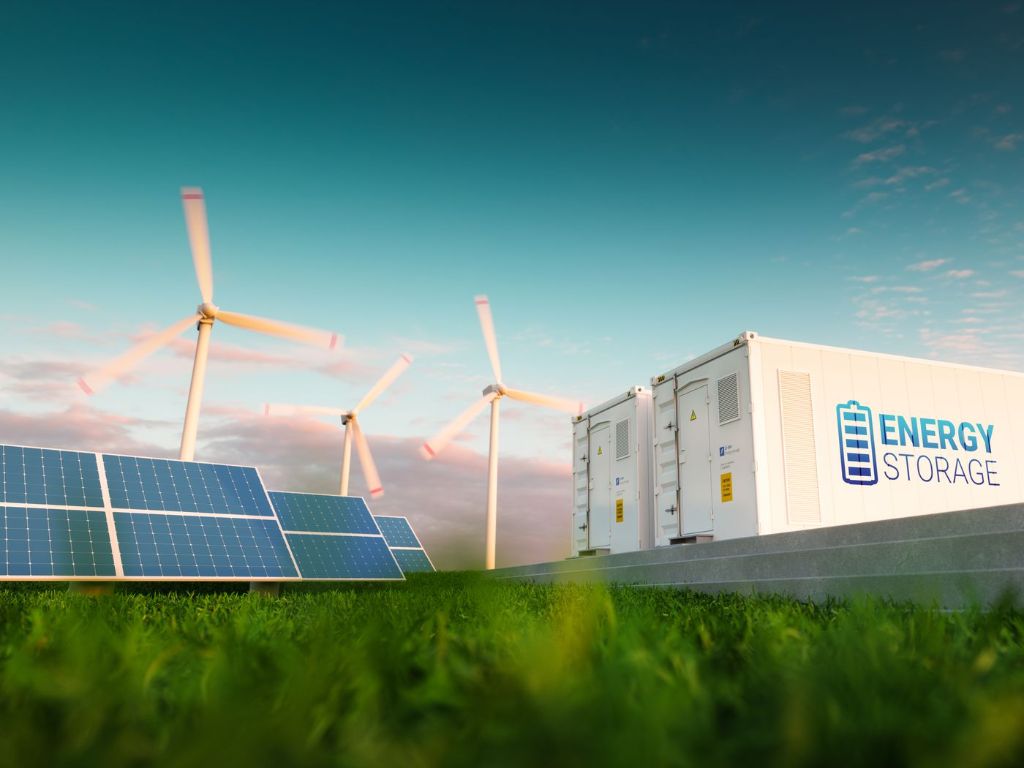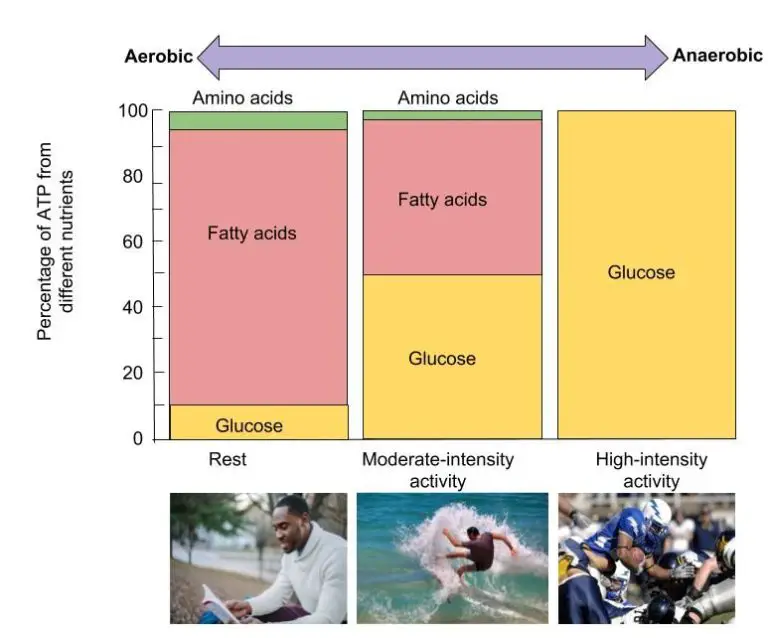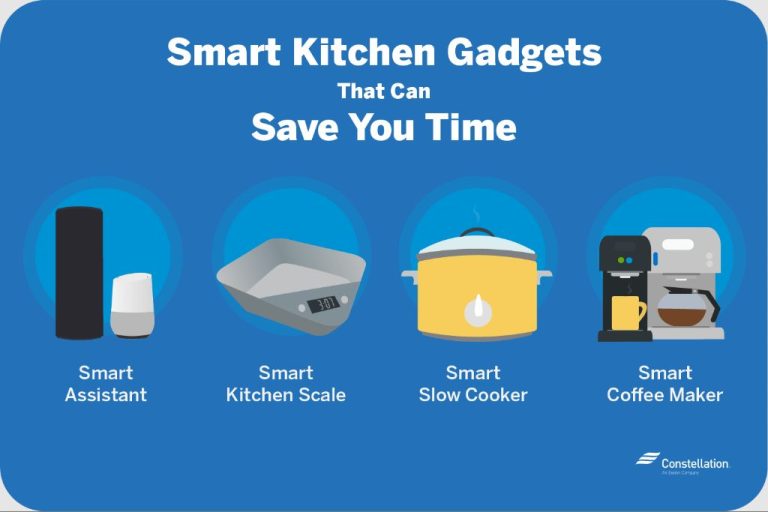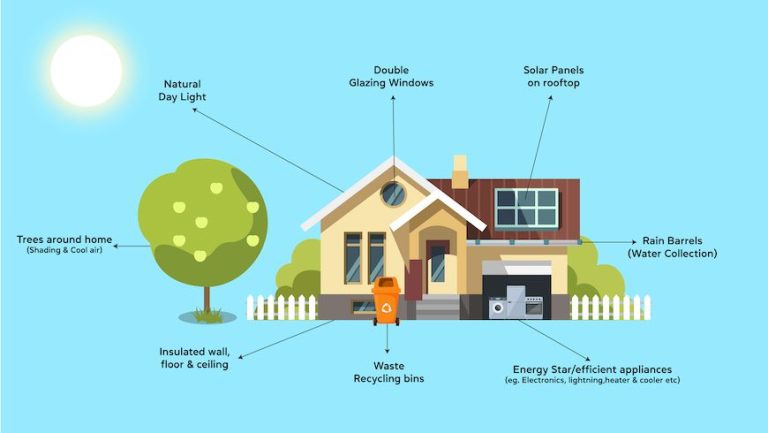Is Renewable Energy Cheaper
Renewable energy has been a hot topic in recent years, as the world faces the looming threat of climate change and the depletion of traditional fossil fuels. As we strive towards a cleaner and more sustainable future, the question on everyone’s mind is: is renewable energy cheaper? While many may assume that renewable sources such as solar or wind power come with hefty price tags, there have been significant advancements in technology and policies that are making it increasingly affordable. In this blog post, we will delve into the cost-effectiveness of renewable energy compared to traditional sources and examine how investing in renewables can not only benefit our planet but also save us money in the long run.
Solar Power Prices Keep Falling Making It More Affordable
One of the most promising renewable energy sources is solar power, and recent trends indicate that it is becoming increasingly affordable. In fact, solar panel prices have fallen by a staggering 90% over the past decade, making it more accessible than ever before. According to the International Renewable Energy Agency (IRENA), the global weighted average cost of installed solar photovoltaic (PV) systems in 2019 was 0.085 USD/kWh, which is lower than the average cost of electricity from coal power plants.
There are several reasons why solar power prices continue to fall. First, advances in technology have made solar panels more efficient, allowing them to generate more electricity from the same amount of sunlight. Second, the economies of scale have come into play as the solar industry has grown, making installation and production costs less expensive. Third, government policies and incentives, such as tax credits and subsidies, have played a significant role in driving down the cost of solar power.
Furthermore, investing in solar power can bring significant long-term financial benefits. Although the upfront costs of installation may seem high, solar panels have a relatively long lifespan of around 25-30 years. Thus, when one takes into account the savings on electricity bills over this time period, the investment can pay off. Moreover, solar power increases the value of a property and lowers its carbon footprint, making it an overall smart investment.
Wind Power Costs Have Dropped Dramatically In Recent Years
In addition to solar power, wind power is another renewable energy source that has seen significant cost reductions in recent years. According to the Global Cost of Energy Analysis (GCEA), onshore wind costs have decreased by around 70% since 2010, and offshore wind costs have fallen by nearly 50% since 2015. In fact, some new wind projects now cost less than the cheapest fossil fuel-powered plants.
The decreasing costs of wind power can be attributed to several factors. Firstly, the technology involved in wind turbines has significantly improved, allowing for higher levels of efficiency and reliability. Additionally, economies of scale have come into play as wind power installations have increased in size and the industry has grown. Moreover, the cost of materials has decreased due to competition and advancements in manufacturing processes. Finally, government policies and incentives, like tax credits and renewable portfolio standards, have encouraged investment and driven down costs.
Furthermore, wind power provides significant long-term financial benefits. Like solar power, wind turbines have a long lifespan of approximately 20-25 years and require minimal maintenance. This longevity results in considerable cost savings on energy bills over time, with many installations breaking even within the first few years of operation. Additionally, wind power can provide a stable return on investment for businesses and communities, as the energy produced is not subject to the volatile fluctuations of fossil fuel markets.
Energy Storage Costs Are Declining Helping Renewable Use More Power When Needed
In addition to the cost reductions in renewable energy production, advancements in energy storage technology are also helping to make renewable energy more affordable and efficient. Energy storage is crucial for smoothing out the variability of renewable energy generation, such as when the sun isn’t shining or the wind isn’t blowing. Historically, the cost of energy storage has been a major barrier for renewable integration, but recent developments have brought forth a significant decline in storage costs.
According to BloombergNEF’s New Energy Outlook 2020 report, the cost of lithium-ion batteries, the most common type of energy storage technology in use, has declined by approximately 89% since 2010. This cost decrease brings tremendous potential for maximizing renewable energy use by storing excess energy production and using it when energy generation is insufficient. Moreover, the increased usage of energy storage systems has led to greater integration of renewable energy sources into the grid, resulting in a more efficient and reliable system.
Several factors have contributed to the drop in energy storage costs. Like renewable energy production, economies of scale have played a significant role. As the demand for energy storage systems has increased, production costs have decreased, and research and development have led to improved battery technology. Additionally, government policies and incentives such as investment tax credits have encouraged innovation and the adoption of energy storage systems.
Furthermore, the benefits of energy storage extend beyond renewable energy integration. Energy storage can also provide essential services to the electricity grid, such as peak load management, frequency regulation, and voltage control, among others. These services can generate additional revenue streams for energy storage owners, further reducing the cost of renewable energy integration.
Geothermal Heating And Cooling Saves Money Avoiding Costly Fossil Fuel Bills
In addition to solar and wind power, geothermal heating and cooling is another form of renewable energy that can significantly reduce energy costs. This innovative technology utilizes the constant temperature of the Earth as an energy source, providing both heating and cooling for buildings. With geothermal heating and cooling, homeowners and businesses can avoid the costly bills associated with traditional fossil fuels such as oil or gas.
According to the United States Department of Energy, geothermal systems can reduce energy bills by up to 70%. This decrease is due to the consistency of the Earth’s temperature, which allows for more efficient heating and cooling. Additionally, unlike traditional heating and cooling systems, geothermal systems require little maintenance and can last upwards of 50 years, further reducing long-term costs.
Not only is geothermal heating and cooling cost-effective, but it also has significant environmental benefits. The technology relies on the Earth’s natural heat, reducing greenhouse gas emissions and dependence on nonrenewable energy sources. In fact, studies have shown that geothermal heating and cooling can reduce carbon emissions by up to 80%.
While the upfront cost of geothermal systems may be higher than traditional systems, incentives such as tax credits and rebates are available to offset the cost. Additionally, as with solar and wind power, economies of scale and advancements in technology are driving down the cost of geothermal systems, making it a more accessible option for homeowners and businesses.
Overall, geothermal heating and cooling presents a significant opportunity for both cost savings and environmental stewardship. Investing in renewable energy sources such as geothermal can have a lasting impact on our planet and our wallets.
Micro-Hydropower Turbines Can Generate Free Electricity From Streams On Your Property
In addition to geothermal heating and cooling, another renewable energy source that can save you money is micro-hydropower. This technology harnesses the power of streams or small rivers to generate electricity that is then used to power your home or business. Micro-hydropower turbines can be installed on your property, allowing you to generate free electricity and reduce your dependence on traditional energy sources.
Micro-hydropower turbines are incredibly efficient, with energy conversion rates of up to 90%. This means that nearly all of the energy generated by the stream or river is converted into usable electricity, making it a highly effective form of renewable energy. Additionally, micro-hydropower systems require very little maintenance and can last up to 50 years, meaning they are a long-term investment that will continue to provide cost savings and environmental benefits for many years to come.
The cost of installing a micro-hydropower system can vary depending on a number of factors, such as the size of the stream or river, the type of turbine needed, and the cost of installation. However, in many cases, the cost of installing a micro-hydropower system can be recouped within a few years due to the savings on energy bills.
Not only can micro-hydropower turbines save you money, but they also have significant environmental benefits. Unlike traditional fossil fuels, which release harmful greenhouse gases into the atmosphere, micro-hydropower is a clean and renewable form of energy that has zero emissions. Plus, because the energy is generated on-site, there is no need for long-distance transmission lines, which can further reduce energy waste and associated costs.
Bioenergy From Waste Produces Renewable Natural Gas Earning Owners Money
In addition to other renewable energy sources such as solar, wind, and hydropower, bioenergy from waste is another highly efficient and cost-effective way of producing clean energy that is both profitable and sustainable. Bioenergy from waste is the process of producing renewable natural gas (RNG) by capturing methane emissions from organic waste such as food waste, agricultural waste, and wastewater. This waste is then processed and converted into RNG, which can be sold to customers, creating a new source of income for waste management companies and other businesses.
One of the significant advantages of bioenergy from waste is the creation of new revenue streams for businesses that would otherwise be paying significant sums for waste disposal. Instead of being viewed as a liability, organic waste can now be seen as a valuable resource that can be monetized through the production of RNG. In fact, many businesses are now actively seeking out organic waste to produce RNG as it offers a more sustainable approach to energy production.
Bioenergy from waste also provides a range of environmental benefits. By capturing methane emissions from organic waste, bioenergy from waste significantly reduces the amount of harmful greenhouse gases released into the atmosphere. Methane is a potent greenhouse gas, and by capturing it instead of allowing it to escape into the atmosphere, bioenergy from waste prevents the emissions of harmful pollutants and reduces the impact of climate change.
Moreover, RNG produced from bioenergy from waste is a clean, domestic, and renewable source of energy that can be used to power homes, businesses, and even vehicles. It is estimated that RNG produced from organic waste can replace up to 70 percent of traditional gas used in homes and industries, thus significantly reducing our dependence on fossil fuels. Additionally, because RNG is a locally produced source of energy, it reduces energy waste associated with long-distance transportation and storage.
Investing In Energy Efficiency Like Leds Saves On Bills Allowing Renewables Pay For Themselves

Investing in renewable energy sources is not only good for the environment but also saves money in the long run. The cost of renewable energy has been decreasing in recent years, making it more affordable than traditional sources such as coal and gas. However, switching to renewables entirely can still be an expensive undertaking, especially for households and businesses with limited resources. Investing in energy efficiency like LEDs is a practical way to save on utility bills, allowing renewable energy systems to pay for themselves.
According to a report by the International Energy Agency (IEA), energy efficiency measures can reduce carbon dioxide emissions by over 40 percent and save households and businesses up to $2.9 trillion by 2035. In the United States alone, the use of energy-efficient technologies saved consumers and businesses $500 billion on their energy bills from 1992 to 2019, with LED lighting alone accounting for $675 million in savings in 2019.
LEDs use up to 90 percent less energy than traditional incandescent bulbs and have a longer lifespan, reducing the need to replace them frequently. Additionally, replacing incandescent bulbs with LEDs can save a household up to $75 annually on electricity bills. When combined with other energy-efficient practices like proper insulation and monitoring energy usage, the savings can be significant.
By investing in energy efficiency, households and businesses can save money on their energy bills, which can then be used to install renewable energy systems like solar panels or wind turbines. Renewable energy systems can pay for themselves in the long run, especially with the availability of incentives and tax credits for their installation.
Government Incentives Continue Cutting The Upfront Costs Of Options Like Solar Panels
Government incentives have played a significant role in making renewable energy sources more accessible and affordable for households and businesses. In the United States, for instance, the federal government offers a tax credit of up to 26 percent for the installation of residential and commercial solar systems. This tax credit can translate to thousands of dollars in upfront savings for homeowners and business owners who opt to install solar panels.
Moreover, many states have established their own incentive programs to support the adoption of renewable energy. For example, in California, the Solar Initiative program provides cash rebates for customers who install solar energy systems, with different rebate amounts depending on the size of the solar system. Similarly, the New York State Energy Research and Development Authority (NYSERDA) offers incentives and financing options for residential and commercial customers who want to install solar panels on their property.
Aside from financial incentives, local governments and utility companies have introduced net metering policies, which allow homeowners and businesses to generate their own electricity and sell excess power back to the grid. This offers a significant financial benefit to those who invest in renewable energy systems, as it offsets their total energy costs and can even earn them extra income.
In addition, there has been a surge in innovative financing models that help make renewable energy systems more affordable. One such model is the power purchase agreement (PPA), which enables consumers to purchase electricity from a third party at a fixed rate, typically lower than the retail electricity rate. This allows consumers to switch to renewable energy with little or no upfront cost, as the third party covers the installation and maintenance of the renewable energy system.
Renewable Energy Certificates Help Individuals Offset Their Household Energy Carbon-Free
In addition to the aforementioned financial incentives, renewable energy certificates (RECs) have emerged as a valuable tool for individuals and businesses to offset their carbon footprint and support the growth of renewable energy production. RECs represent the environmental attributes or benefits associated with one megawatt-hour (MWh) of electricity generated from a renewable energy source. By purchasing RECs, consumers are essentially investing in renewable energy projects and supporting the transition towards a cleaner energy future.
RECs are often marketed as a way to “go green” and reduce one’s carbon footprint. For example, a homeowner or business may elect to purchase a certain number of RECs to offset their household or office electricity usage. The funds generated from the sale of RECs are often used to finance the development and construction of new renewable energy projects, including solar, wind, and hydroelectric power plants.
One of the key benefits of RECs is that they are easy to purchase and use, requiring no physical changes to an individual’s current electricity provider or equipment. Instead, RECs are purchased separately from electricity itself and are traded on the open market, with prices varying based on supply and demand. As such, consumers have the flexibility to choose how many RECs they want to purchase and how frequently they want to offset their energy usage.
Beyond the environmental benefits, RECs also offer some financial advantages to renewable energy developers and investors. By purchasing RECs, consumers are essentially providing a guaranteed revenue stream to renewable energy projects, which can make these projects more financially viable and attractive to investors. In turn, this can help spur the growth and expansion of renewable energy capacity, ultimately driving down the cost of renewable energy production over time.
Overall, renewable energy certificates have emerged as an important tool for consumers, businesses, and investors looking to support the growth of renewable energy production and reduce their carbon footprint. With a wide range of financial incentives and policy supports available, renewable energy is becoming an increasingly affordable and practical option for those who want to make a positive impact on the environment while also saving money in the long run.
Communities Invest Collectively In Solar Farms And Other Projects Their Entire Town Benefits From
In recent years, many communities have taken bold steps towards sustainability by investing in renewable energy on a collective basis. This approach allows individuals to pool their resources and finance large-scale renewable energy projects that benefit the entire town or community. Solar farms and wind turbines are particularly popular options for these communal investments, as they offer a reliable and cost-effective way to generate renewable energy at scale.
One major advantage of community-based renewable energy projects is that they can significantly reduce energy costs for both individuals and local businesses. By generating electricity locally, communities can avoid the high transmission and distribution costs associated with traditional electricity sources. Moreover, if excess energy is generated and not used, it can be sold back to the grid, providing an additional source of revenue for the community.
Another notable benefit of community-based renewable energy projects is the positive impact they can have on the environment. By reducing reliance on fossil fuels, communities can significantly lower their carbon emissions and contribute to a cleaner, greener planet. Community-based renewable energy projects may also help to mitigate the effects of climate change, such as rising sea levels and extreme weather events, which are becoming more frequent and severe.
Many communities that have invested in renewable energy on a collective basis have done so through the formation of energy cooperatives or similar organizations. These cooperatives allow community members to pool their resources and invest in large-scale renewable energy projects that may not be feasible for individuals or small businesses to undertake on their own. Energy cooperatives can also provide a platform for education and outreach on the benefits of renewable energy and sustainability.
Deregulated Energy Markets Allow People To Choose Cheaper Renewable Energy Providers
Furthermore, the availability of deregulated energy markets has opened up a new avenue for individuals and businesses looking to access cheaper renewable energy providers. In these markets, consumers are not bound to a single utility company and have the flexibility to choose from a range of energy providers based on price and service quality. The renewable energy sector has seen a significant surge in these markets, with providers leveraging technological advances and economies of scale to drive down costs and offer competitive pricing.
For instance, in the United States, states like Texas and Illinois have seen a significant shift towards renewable energy in their deregulated markets. According to reports, Texas has invested heavily in renewable energy, with wind and solar energy accounting for more than one-fourth of the state’s electricity generation. As a result, energy prices in Texas have remained competitive, making it an attractive option for energy customers. In Illinois, renewable energy providers like Wind Energy Developers Association (WEDA) are offering customers access to wind energy at rates that are comparable to traditional energy sources.
Moreover, as renewable energy becomes more mainstream, the costs associated with installation and operation continue to fall. In recent years, the cost of solar panels has dropped by almost 70%, making it more affordable for consumers, small businesses, and communities to invest in solar energy. Similarly, large-scale wind projects have seen significant cost reductions, with many projects offering electricity at rates that are comparable to or lower than traditional fossil fuel sources.
Studies Show Householders Switch To Wind Or Solar Typically Save Hundreds Yearly Within A Decade
The evidence is clear, as studies have consistently shown that households who switch to renewable energy sources such as wind or solar power can save hundreds of dollars annually within just a decade. For example, according to the National Renewable Energy Laboratory, households that switch to solar energy can save an average of $44 to $187 per month on their electricity bills, depending on the state and energy consumption. Furthermore, a report from Consumer Reports found that a typical homeowner who invests in solar panels would likely see a return on their investment within 5 to 10 years through energy savings.
But it’s not just residential consumers who stand to benefit financially from renewable energy. Large corporations are also starting to see the advantages of investing in renewables. For instance, in 2019, Google announced that it had achieved its goal of sourcing 100% renewable energy for its global operations, and it now purchases more renewable energy than any other corporation in the world. Google stated that investing in renewable energy has saved the company billions of dollars in energy costs.
Furthermore, the economic benefits of renewable energy extend beyond cost savings. The renewable energy industry is a growing sector that’s currently creating jobs at a faster rate than the overall economy. A report from the International Renewable Energy Agency estimated that there were over 11 million jobs in the renewable energy sector worldwide in 2018. Additionally, investing in renewable energy can reduce energy dependency, increase energy security, and reduce greenhouse gas emissions that contribute to climate change.
Conclusion
In conclusion, it is undeniable that the prices of renewable energy sources such as solar and wind power have been continuously falling, making them more accessible and affordable for households and communities. Moreover, thanks to advancements in technology and decreasing costs of energy storage, the potential for these sustainable resources to provide reliable power when needed has greatly increased. Not only that, but investing in renewable options such as geothermal heating and cooling, micro-hydropower turbines, bioenergy from waste, and energy-efficient solutions like LEDs can lead to significant cost savings in the long run. Additionally, with government incentives and programs such as renewable energy certificates and community investments in solar farms, individuals can make a positive impact on the environment while also benefiting financially. Moreover, with options like deregulated energy markets allowing for the choice of cheaper renewable providers, it is evident that switching to wind or solar power can not only lower household bills but also have a positive economic impact in the long term. As studies have shown, homeowners who make the switch typically save hundreds yearly within a decade – proving that investing in sustainability today means securing a brighter future for generations to come. So let us continue to support and embrace renewable energy options as we work towards building a cleaner and greener planet for all.






